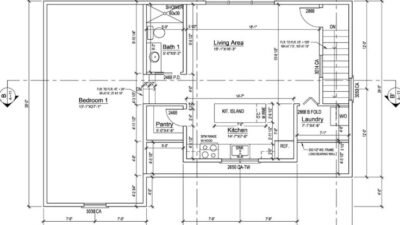Farming and agriculture have evolved dramatically over the past few decades, and so have the structures used to support these operations. One of the most significant changes has been the rise of the Agriculture Metal Building — a solution that offers durability, affordability, and adaptability for modern farmers. Whether you need space for livestock, equipment, hay storage, or a combination of all three, choosing the right metal building can have a profound impact on your productivity and bottom line.
In this guide, we’ll walk you through the essential considerations when selecting the best Agriculture Metal Building for your unique needs.
1. Define Your Agricultural Needs
The first step in choosing the right Agriculture Metal Building is understanding what you need it for. These buildings are incredibly versatile and can be customized for various purposes, including:
- Livestock shelters
- Equipment storage
- Hay and feed storage
- Workshops
- Grain storage
- Crop protection structures
Each use case requires different design features, such as ventilation, insulation, and access points. For example, a livestock building will need proper airflow and temperature control, while an equipment storage shed might prioritize security and space efficiency.
2. Determine the Right Size and Layout
Once your needs are clear, you can decide on the appropriate size and layout. Think long-term. It’s not just about what you need today but what your operation may require five or ten years down the road.
Consider:
- The number and size of vehicles or equipment
- The number of animals and their movement space
- Space for feed, grain, or harvest storage
- Office or workbench areas
Many Agriculture Metal Building providers offer customizable layouts, allowing you to partition spaces or add lean-tos, mezzanines, or skylights to increase utility and natural lighting.
3. Choose a Strong and Durable Frame
The frame is the backbone of your Agriculture Metal Building, and steel is typically the material of choice. Steel buildings are corrosion-resistant, pest-resistant, and able to withstand extreme weather conditions — a must-have feature for structures that will face rain, wind, and sun on a regular basis.
There are two main types of frames used in agricultural buildings:
- Rigid Frame: Ideal for large open spaces and heavy-duty use.
- Tube Frame: More affordable and suitable for smaller operations or lighter use.
Make sure to select a frame that aligns with your farm’s climate conditions and load requirements.
4. Consider Roofing and Siding Options
The roof and siding of your Agriculture Metal Building protect the interior from the elements and contribute to the building’s energy efficiency. There are several roofing styles to consider:
- Gable Roofs for classic barn-style aesthetics
- Single-slope Roofs for ease of water drainage
- Vertical Roof Panels for better debris runoff
Similarly, you can choose from different siding finishes — galvanized, painted, or insulated panels — depending on your insulation needs and budget. Look for materials that are low-maintenance and offer UV protection
5. Pay Attention to Ventilation and Insulation
Whether you’re housing livestock or storing grain, temperature and airflow play a critical role in maintaining the integrity of your investment. An Agriculture Metal Building must include proper ventilation systems such as:
- Ridge vents
- Louvers
- Exhaust fans
- Windows with screens
For buildings exposed to extreme temperatures, insulation is essential to control internal climate and prevent condensation, which can lead to mold and rust. Spray foam, fiberglass, and insulated metal panels are popular insulation options.
6. Assess Door and Access Needs
Easy access is vital for moving animals, feed, or machinery in and out of the structure. You should consider installing multiple types of doors in your Agriculture Metal Building, such as:
- Roll-up doors for large vehicles
- Sliding doors for barns
- Personnel doors for easy daily access
Ensure the placement of doors allows smooth workflow and is compatible with your farm’s traffic patterns.
7. Look for Expandability Options
Farming is a growing business. A well-designed Agriculture Metal Building should allow for future expansion. This could mean adding another bay, attaching a lean-to, or building upwards.
Speak with your building supplier about expandability options from the beginning so your foundation and structure are designed with future changes in mind.
8. Understand Local Zoning and Building Codes
Before you finalize your purchase, check with your local municipality or county office regarding zoning regulations and building permits. Your Agriculture Metal Building must comply with wind, snow, and seismic load codes. Some areas may also have restrictions on the use of certain materials or require specific fire safety measures.
A reputable metal building provider can help guide you through this process and may even handle the permit application for you.
9. Budget Wisely
An Agriculture Metal Building is an investment — and while it often costs less than traditional wood-framed structures, you still need to budget carefully. Factor in:
- Site preparation costs (grading, foundation, drainage)
- Delivery and installation fees
- Additional customization (lighting, insulation, interior walls)
- Maintenance expenses
It may be tempting to go with the cheapest quote, but value is more important than price. Ensure you’re getting high-quality materials, proper engineering, and excellent customer support.
10. Choose a Reputable Manufacturer or Supplier
Finally, partner with a trusted supplier that specializes in Agriculture Metal Buildings. Look for companies with:
- Proven experience in the agricultural sector
- A wide range of customizable options
- Positive reviews and testimonials
- Industry-standard warranties
The right provider will work with you from design to installation, ensuring your building is not only functional but optimized for long-term success.
Final Thoughts
Choosing the best Agriculture Metal Building comes down to understanding your farm’s unique needs, planning for the future, and working with the right partners. With the right structure in place, you’ll benefit from increased efficiency, reduced maintenance costs, and greater peace of mind knowing your assets are protected.




